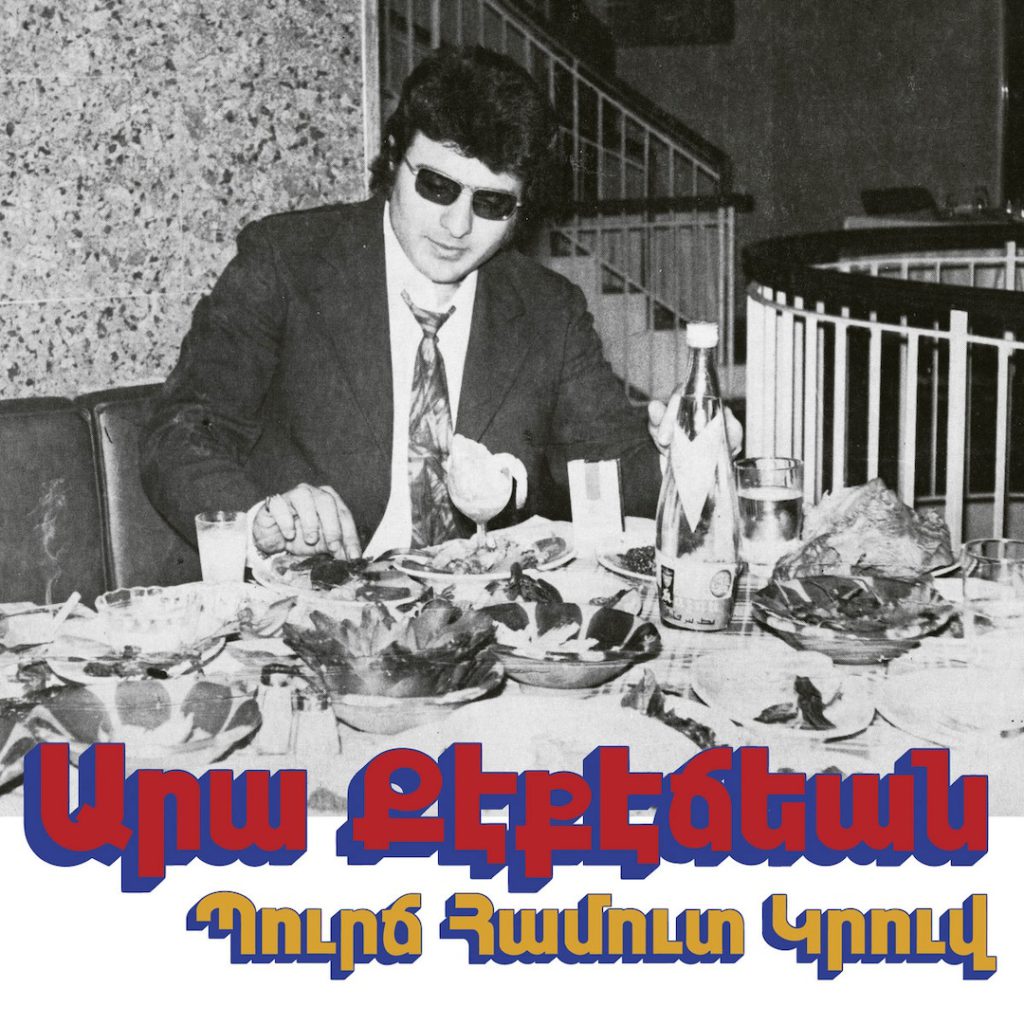
From its first note, “Mini, Midi, Maxi,” the opening track off Bourj Hammoud Groove, Habibi Funk’s new Ara Kekedjian retrospective, will transport you to another time and place. You don’t know where in the world you are, but it’s somewhere around the end of the 1960s and you’re feeling very jet set as you shimmy against psychedelic lights in your Paco Rabanne fit while smoking a really long cigarette. The band is giving Jacques Dutronc energy with a song that falls somewhere in between “Mini, Mini, Mini” and “Et Moi, Et Moi, Et Moi.” You don’t really understand the lyrics, but it doesn’t matter. Vibe transcends language at the global disco-a-go-go.
Bourj Hammoud Groove is the 33rd release from Habibi Funk, the German reissue label that focuses on music from the Arab world, and its first dedicated to an artist from Lebanon’s Armenian community. For this dive into the works of Ara Kekedjian, the label teamed up with Darone Sassounian, who is an L.A.-based DJ and proprietor of Rocky Hill Records, which previously released the incredibly funky compilation album, Silk Road: Journey of the Armenian Diaspora 1971 -1982.
Kekedjian emerged from Bourj Hammoud, a suburb of Beirut, in the 1960s, where, according to an article in Middle East Eye, he played in bands Les Vampires and Les Lunettes Noires, the latter of which became the first band to perform a song in Armenian on Lebanese TV. He then went solo and, in addition to releasing his own music, composed for other artists, like Adiss Harmandian, who was also very well known in the realm of Lebanese-Armenian pop.
I know that the internet is supposed to be a place where one pretends to be an expert on whatever they’re babbling about, but, I’m just going to be up front and tell you that I have almost no expertise in Armenian music. Any bit of knowledge that I’ve acquired over the years has been gleaned from interviewing people or reading album liner notes. Since I bought a digital copy of Bourj Hammoud Groove, I don’t have liner notes to reference here, and I didn’t interview anyone for this. That said, I’ve been listening with very little context for the album.
For readers who know that I’m also Armenian, you might be a bit baffled. Certainly, I must be able to lend an insight others don’t have, right? The answer is no, not really. I have a passing familiarity of songs and artists heard at weddings, in restaurants or on Armenian Teletime, but that’s about it. I’m also not an Armenian speaker, so I can’t tell you much about this particular collection of songs aside from that they’re probably about girls. “Ghapama,” though, is definitely about food, possibly food made and served by a girl. IDK. And, unfortunately, I’ve never been to Lebanon, so I don’t know anything about Bourj Hammoud except that it has a large Armenian population.
But, the thing is, maybe a ton of context isn’t necessary. In fact, it might hamper the listening experience.
Back in college, I got on this International Swingin’ ‘60s kick. There were loads of compilation album coming out focusing on movements like French yé-yé, Italian film music, garage rock and psych from across Latin America and Asia. It all captivated me. At the same time, I watched lots of ‘60s, and early ‘70s, film and was interested in art and design from the era. The thing that intrigued me is that, no matter where the music or films or art were made, there was this sense of freedom and rebellion to it, as if, worldwide, people were pushing against social and cultural boundaries in a way that feels very natural. I get that same feeling while listening to Bourj Hammoud Groove. There is traditional Middle Eastern musicianship throughout the album, but it twists with rock and soul and jazz in a way that’s effortlessly cool.
The music makes my imagination run wild. I’m listening to the beats and the production and imagining where they might fit into a movie. “Ay Dghakner” is for the belly dance club scene in a spy flick. “Sev Sev Atcher” (“Black Black Eyes”) is the psych-pop song playing at the teen club where two young rebels fall in love at first sight. “Karavan” plays in the cafe where everyone wears thick-rimmed glasses and sips tiny cups of coffee while they talk about philosophy and politics. “Ayn Oren,” with a hint of “Miserlou” and a spaghetti western whistle, sounds like it exists for a movie that Quentin Tarantino has yet to make. Every recording on here is evocative of some imagined film that now lives only in my head. I think that’s a testament to how tight of a collection Bourj Hammoud Groove is. If an album can prompt you to put aside whatever you’re doing and dream for just a few minutes, it’s good. If it can do this for 37 minutes, it’s excellent.
Get Bourj Hammoud Groove by Ara Kekedjian.
Liz O. is an L.A.-based writer and DJ. Follow on Instagram or sign up for the weekly, Beatique newsletter for updates on new stories and gigs.
Keep Reading:
From The Centimeters to Elf Freedom: The Musical Evolution of Nora Keyes (Interview)
